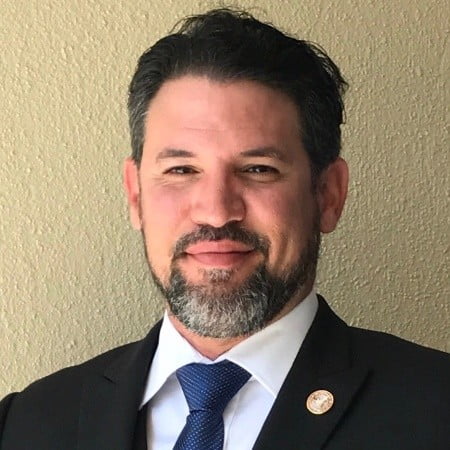

Click Here for a confidential benefits check or call (866) 578-7471 to speak to a addiction specialist.
Addiction is not just about substance use—it’s about survival. And without treatment, the results can be deadly. In 2022 alone, over 100,000 people in the U.S. died from drug overdoses, according to the CDC. That’s nearly 300 lives lost every day. If you or someone you love is struggling, waiting for “the right time” can be the most dangerous decision of all.
A 60 day addiction treatment program provides enough time to stabilize, heal, and develop the tools needed for long-term recovery. Unlike shorter programs, a two-month stay allows individuals to dig deeper into the root causes of their addiction while building habits that support a sober life.
As addiction recovery pioneer Bill Wilson once said:
“It’s not the load that breaks you down, it’s the way you carry it.”
This post will help you understand how a two-month rehab program can lighten that load and lead to a healthier, more hopeful future.
What Is a 60 Day Addiction Treatment Program?
A 60 day addiction treatment program is a structured, residential or outpatient rehab program that lasts approximately two months. It offers intensive support for people recovering from alcohol, drug, or behavioral addictions. These programs include a mix of detox, therapy, medical care, group support, and life-skills development.
Sixty days is longer than most standard 30-day programs but more accessible than 90-day or long-term options. It’s a perfect middle ground for those who need more than a quick fix but can’t commit to extended time away from work, family, or school.
Why 60 Days Matters: The Danger of Short-Term Fixes
While 28-day programs are common, many experts believe they’re too short for deep healing. The National Institute on Drug Abuse (NIDA) states that treatment lasting less than 90 days is of limited effectiveness. However, many people can’t commit to three full months. That’s why a two-month rehab program strikes a crucial balance between time, affordability, and effectiveness.
A 60-day stay allows time to:
- Fully detox and stabilize
- Address co-occurring mental health conditions
- Understand and change behavioral patterns
- Learn relapse prevention techniques
- Begin rebuilding family and life relationships
You don’t just “get clean”—you begin living again.
What to Expect in a Two-Month Rehab Program
Every facility is a little different, but most 60-day treatment programs include:
The first step is clearing substances from the body. This may include medications to ease withdrawal symptoms, supervision, and emotional support.
One-on-one sessions with a licensed therapist to uncover the root causes of addiction, such as trauma, depression, or anxiety.
A supportive environment where people in recovery share experiences, gain insight, and learn from one another.
Addiction affects the entire family. These sessions help rebuild trust and establish healthy communication.
5. Life Skills and Education
Workshops may include stress management, job readiness, nutrition, and other essentials for a stable, sober life.
Before the 60 days end, your team will create a personalized aftercare plan, which may include outpatient therapy, sober living, or support groups.
Is 60 Days Enough for Recovery?
It’s a fair question. Sixty days is not a cure—it’s a foundation. Recovery is a lifelong journey, but starting with a solid two-month rehab program can greatly increase your odds of success.
Research from SAMHSA shows that people who complete at least 60 days of treatment are significantly less likely to relapse than those who drop out earlier. Why? Because healing takes time. Trust takes time. And transformation isn’t instant—it’s earned.
In 60 days, you can:
- Break destructive habits
- Develop coping strategies
- Build a sober support network
- Start to believe in yourself again
Who Benefits from a 60 Day Addiction Treatment Program?
A 60-day program is a great fit for:
- People who have relapsed after shorter programs
- Those with dual diagnoses (addiction + mental health issues)
- Individuals who want more time to prepare for sober living
- Patients transitioning from inpatient detox who need extended care
- Anyone who’s ready to make a real, lasting change
How to Pay for 60-Day Rehab
Worried about cost? You’re not alone. Fortunately, many 60 day addiction treatment programs accept:
- Private insurance
- Medicaid or Medicare (depending on the facility)
- Sliding scale fees
- Payment plans or scholarships
The Affordable Care Act requires most insurance plans to cover addiction and mental health treatment. Don’t let money be the reason you don’t get help—reach out and explore your options.
Outpatient vs. Inpatient: What’s Right for You?
You can complete a two-month rehab program either inpatient (living at the facility) or outpatient (living at home and attending sessions daily or weekly).
- Inpatient: Ideal for people who need 24/7 structure, safety, or distance from triggering environments.
- Outpatient: Better for those with strong home support and less severe symptoms.
Some people even start as inpatients and step down to outpatient care halfway through their 60 days.
Real Recovery: One Step at a Time
You’re not broken. You’re not hopeless. And you’re not alone.
Thousands of people enter 60-day programs every year and come out with a renewed sense of purpose. They leave behind not just substances, but self-doubt, shame, and fear. In their place, they gain confidence, connection, and clarity.
Recovery isn’t about perfection. It’s about progress—and 60 days gives you the time to make meaningful, lasting change.
Two Months to a New Beginning
A 60 day addiction treatment program is more than a timeline—it’s a turning point. It offers space to breathe, time to grow, and the support to truly heal. Whether you’re just starting your recovery journey or looking for a second chance, two months can change your life.
Don’t wait for things to get worse. Hope is already here—you just have to reach for it.
If you’re ready to take the first step toward freedom, we’re here to help.







